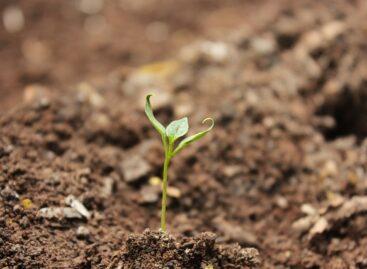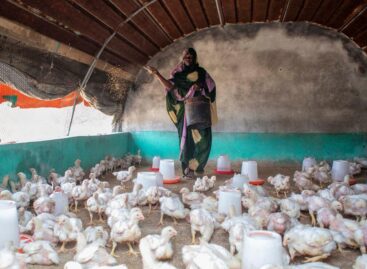Heads of OECD and FAO emphasise the importance of peace and transforming our agrifood systems for guaranteeing access to food for the world’s poorest
The global agrifood sector faces fundamental challenges over the coming decade, particularly the need to feed an ever-increasing population in a sustainable manner, the impacts of the climate crisis and the economic consequences and disruptions to food supply linked to the war in Ukraine, according to a report released today by the Food and Agriculture Organization of the United Nations (FAO) and the Organisation for Economic Co-operation and Development (OECD).
The OECD-FAO Agricultural Outlook 2022-2031 focuses on assessing the medium-term prospects for agricultural commodity markets. The findings of the report underscore the crucial role of additional public spending and private investment in production, information technology and infrastructure as well as human capital to raise agricultural productivity.
Prices of agricultural products have been driven upward by a host of factors, including the recovery in demand following the outbreak of the COVID-19 pandemic and the resulting supply and trade disruptions, poor weather in key suppliers, and rising production and transportation costs, which have been further exacerbated recently by uncertainties regarding agricultural exports from Ukraine and Russia, both key suppliers of cereals. Russia’s role in fertilizer markets has also compounded already existing concerns about fertilizer prices and near-term productivity.
The report provides a short-term assessment of how the war may affect both global agricultural markets and food security. It underlines major risks to key commodity markets: equilibrium prices for wheat could be 19% above pre-conflict levels if Ukraine fully loses its capacity to export and 34% higher if in addition Russian exports are 50% of normal amounts.
A scenario simulating a severe export shortfall from Ukraine and Russia in 2022/23 and 2023/24, and assuming no global production response, suggests a further increase in the number of chronically undernourished people in the world following the COVID-19 pandemic.
“Without peace in Ukraine, food security challenges facing the world will continue to worsen, especially for the world’s poorest,” OECD Secretary-General Mathias Cormann said. “An immediate end of the war would be the best outcome for people in both Russia and Ukraine and for the many households around the world that are suffering from sharp price increases driven by the war.”
“These rising prices of food, fertilizer, feed and fuel, as well as tightening financial conditions are spreading human suffering across the world,” said FAO Director-General QU Dongyu. “An estimated 19 million more people could face chronic undernourishment globally in 2023, if the reduction of global food production and food supply from major exporting countries, including Russia and Ukraine, results in lower food availability hitting worldwide.”
Whilst addressing the immediate problems, the global community should not lose sight of the need to work towards achieving the 2030 Agenda and the Sustainable Development Goals (SDGs). According to the Outlook, global food consumption, which is the main use of agricultural commodities, is projected to increase by 1.4% annually over the next decade, and to be mainly driven by population growth. Most additional demand for food will continue to originate in low- and middle-income countries, while in high-income countries demand will be limited by slow population growth and a saturation in the per capita consumption of several food commodity groups. Diets in low-income countries, however, will likely remain largely based on staples and food consumption will not increase sufficiently to meet the Zero Hunger target by 2030.
Over the next decade, global agricultural production is projected to increase by 1.1% per year, with the additional output to be mainly produced in middle- and low-income countries. The Outlook assumes a wider access to inputs and shows that increased productivity-enhancing investment in technology, infrastructure and training will be critical drivers of agricultural growth. However, a prolonged increase in energy and agricultural input prices – such as fertilisers – will raise production costs and may constrain productivity and output growth in the coming years.
The Outlook highlights the significant contribution of agriculture to climate change. Direct greenhouse gas (GHG) emissions from agriculture are projected to increase by 6% during the next decade, with livestock accounting for 90% of this increase. Agricultural emissions are, nonetheless, projected to grow at a lower rate than production, thanks to yield improvements and a reduction in the share of ruminant production, indicating a decline in the carbon intensity of agriculture. Greater efforts will be needed for the agricultural sector to effectively contribute to global reductions in GHG emissions, as set out in the Paris Agreement on climate change, including large-scale adoption of climate-smart production processes and technologies, especially in the livestock sector.
The Outlook provides an assessment of how potentially competing objectives of the agricultural sector can be achieved. Average agricultural productivity must increase by 28% over the next decade for the world to meet the Sustainable Development Goal (SDG 2) on Zero Hunger, while simultaneously keeping agricultural emissions on track to reach the Paris Agreement targets. This is more than triple the increase in productivity recorded in the last decade.
Ensuring well-functioning global trade and markets is essential for addressing both short- and medium-term challenges to food security. Globally, trade in the main agricultural commodities and processed products is projected to grow in line with production over the next decade. However, some regions are expected to export a growing share of their domestic production, while others are foreseen to import a growing share of their total consumption. This increasing interdependency between trading partners underscores the critical importance of a transparent, predictable and rules-based multilateral trading system.
More information on the OECD-FAO Agricultural Outlook is available here.
Related news
The global climate crisis will become serious by 2025: never before have so many alarming signs pointed in one direction
🎧 Hallgasd a cikket: Lejátszás Szünet Folytatás Leállítás Nyelv: Auto…
Read more >AM: One of Hungary’s greatest strategic assets is good-quality fertile soil
🎧 Hallgasd a cikket: Lejátszás Szünet Folytatás Leállítás Nyelv: Auto…
Read more >FAO: International food prices have been declining since September
🎧 Hallgasd a cikket: Lejátszás Szünet Folytatás Leállítás Nyelv: Auto…
Read more >Related news
Crowds return to stores: margin cap and year-end preparations drive retail traffic
🎧 Hallgasd a cikket: Lejátszás Szünet Folytatás Leállítás Nyelv: Auto…
Read more >The second big rush in department stores comes between the two holidays
🎧 Hallgasd a cikket: Lejátszás Szünet Folytatás Leállítás Nyelv: Auto…
Read more >Pensioner food vouchers can be redeemed until December 31st
🎧 Hallgasd a cikket: Lejátszás Szünet Folytatás Leállítás Nyelv: Auto…
Read more >






